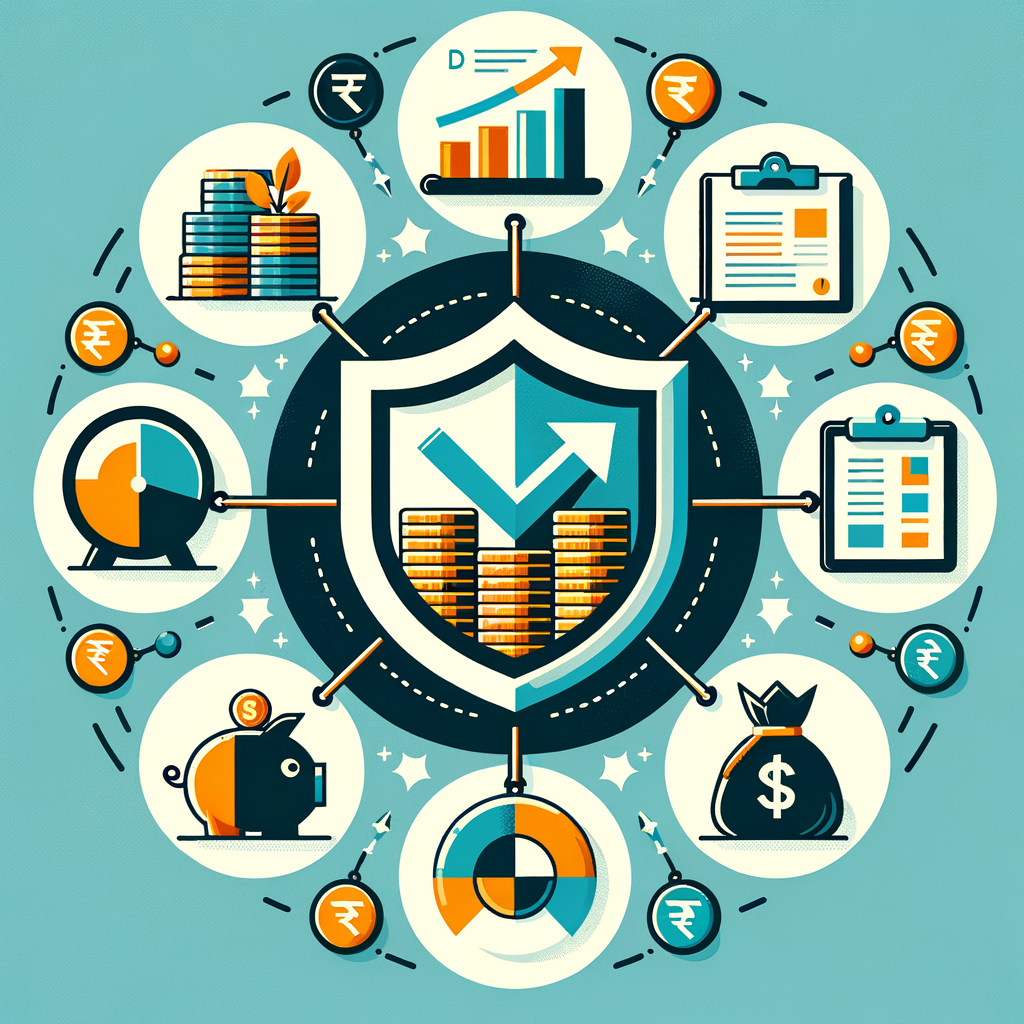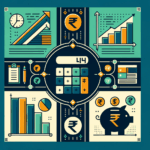Managing Debt with a Variable Income: Tips and Strategies
Picture this: you’re a freelance graphic designer in Mumbai who just landed a massive project, and the payment has finally hit your account. The feeling is euphoric! But as you celebrate, a nagging thought creeps in – next month is looking lean, yet the home loan EMI, the car loan payment, and the credit card bill will arrive right on schedule. This common scenario highlights the core challenge for millions of Indians: the stressful mismatch between unpredictable income and fixed monthly debts. Successfully managing debt with a variable income can feel like a daunting task, but it is entirely achievable with the right financial discipline and a solid plan. This comprehensive guide will provide you with actionable debt management tips India-specific, designed for freelancers, small business owners, and salaried professionals whose earnings fluctuate.
The Unique Challenge: Fixed EMIs on a Fluctuating Income
The fundamental issue for anyone with an inconsistent income is managing cash flow to meet non-negotiable financial commitments. Unlike a person with a fixed monthly salary, you don’t have the certainty of a specific amount hitting your bank account on a specific day. This variability creates unique financial and psychological pressures that must be addressed head-on with a structured approach. Without a system, it’s easy to fall into a cycle of financial stress that can have long-lasting consequences on both your credit health and peace of mind.
The “Feast or Famine” Financial Cycle
This cycle is a familiar reality for many entrepreneurs, sales professionals, and gig economy workers. During a “feast” month, flush with cash from a large commission or a completed project, the temptation to overspend is immense. You might splurge on discretionary items, dine out more often, or make impulse purchases, believing the high income will continue. This is often followed by a “famine” month, where income is significantly lower. The fixed EMIs still need to be paid, but the cash buffer is gone, leading to panic, anxiety, and sometimes, the need to take on more debt just to cover essential expenses. This rollercoaster of financial emotions is not just stressful; it actively prevents wealth creation and makes long-term financial stability nearly impossible. Acknowledging this pattern is the first step, and implementing practical managing variable income debt tips is the solution to breaking the cycle for good. This is a common challenge that requires specific Debt Management for Freelancers and the Self-Employed.
Impact on Your CIBIL Score in India
Your CIBIL score is a three-digit number that reflects your credit history and is one of the most critical factors lenders in India consider when you apply for any form of credit, be it a loan or a credit card. A score above 750 is generally considered excellent. The “famine” part of the variable income cycle poses a direct threat to this score. Missing even a single EMI payment or paying your credit card bill late can cause your CIBIL score to drop significantly. A lower score can lead to loan rejections or approvals at much higher interest rates in the future, making it more expensive to borrow. It’s a vicious cycle where a low-income month leads to a missed payment, which damages your credit score, making future borrowing more difficult and costly. You can and should regularly monitor your credit health by checking your score on the official CIBIL website.
For more details, you can visit the TransUnion CIBIL Official Website.
Step 1: Build Your Financial Bedrock with a “Variable Income Budget”
Before you can attack your debt, you need a stable foundation. A standard budget based on a fixed monthly salary won’t work for you. Instead, you need a “Variable Income Budget” designed to withstand financial fluctuations. This budget isn’t about restriction; it’s about creating certainty in an uncertain environment and is the cornerstone of managing debt with a variable income. It provides a clear, conservative roadmap for your essential spending, ensuring that your most important obligations are always met, regardless of how much you earned in a particular month.
Calculate Your “Baseline” Monthly Income
Your first task is to find your financial floor. Look back at your bank statements for the last 12 months and list your monthly income for each month. To be safe and conservative, identify the lowest amount you earned in a single month during that period. This number is your “baseline” monthly income. Do not use your average income, as that can give you a false sense of security. Your baseline income is the absolute minimum you can rely on for your budget. All your essential financial commitments, especially your EMIs, must be covered by this baseline figure. If your total fixed expenses exceed your baseline income, it’s a red flag that your debt load is too high for your income’s instability.
Create a “Bare-Bones” Budget
Once you have your baseline income, it’s time to list every single expense and categorize them ruthlessly. This “bare-bones” budget will form the core of your monthly financial plan.
- Fixed Essentials: These are your non-negotiable monthly costs. They do not change month to month.
- Rent or Home Loan EMI
- Car Loan EMI
- Insurance Premiums (life, health, vehicle)
- School/College Fees
- Variable Essentials: These are necessary expenses, but the amount can fluctuate.
- Groceries and Household Supplies
- Electricity, Water, and Gas Bills
- Mobile and Internet Bills
- Commute/Petrol Costs
- Wants/Discretionary Spending: These are non-essential lifestyle expenses.
- Dining Out and Entertainment
- Streaming Subscriptions (Netflix, Amazon Prime)
- Shopping for non-essentials
- Vacations
Your “bare-bones” budget should only consist of your Fixed Essentials and a very conservative, realistic estimate for your Variable Essentials. The total of this budget must be less than or equal to your “baseline” monthly income.
Actionable Strategies for Managing Debt in India
With your budget in place, you can now implement powerful strategies to manage your payments and systematically reduce your debt. These methods are designed to create financial discipline and leverage your high-income months to your advantage, turning the “feast or famine” cycle into a structured plan for financial freedom.
The “Two-Account” System for Financial Discipline
This simple but incredibly effective system creates a firewall between your variable income and your essential expenses. It requires you to operate out of two primary bank accounts:
- Account 1 (Income Account): All your income, from every source, gets deposited into this account. This is your primary receiving account.
- Account 2 (Expenses Account): At the beginning of each month, you will transfer a fixed amount—your “bare-bones” budget total—from your Income Account to this Expenses Account. All your automated payments, like EMIs, insurance premiums, and SIPs, should be linked to this account. You should also use this account’s debit card for all your essential variable spending like groceries and utilities.
This system guarantees that the money for your essential obligations is always set aside and protected. Even if you have a great month and a large sum sits in your Income Account, you are psychologically trained to live off the fixed amount in your Expenses Account, preventing lifestyle inflation.
Build a Robust Emergency Fund (Your #1 Priority)
For someone with a variable income, an emergency fund is not just a suggestion; it is your ultimate financial safety net. It’s the buffer that allows you to pay your EMIs during a low-income month without stress or having to take on more debt. While financial advisors often recommend 3-6 months of expenses, you need a larger cushion.
Aim to save at least 6 to 9 months’ worth of your “bare-bones” budget expenses.
This fund should be kept in a separate, liquid savings account or a liquid mutual fund where it is easily accessible but not so easy that you’re tempted to dip into it for non-emergencies. This fund is one of the most critical variable income debt solutions India offers for self-employed individuals and freelancers.
Strategically Attack High-Interest Debt
Once your emergency fund is in place, you can aggressively tackle your existing debts. Two of the most popular strategies for managing debt India-wide are the Debt Avalanche and Debt Snowball methods. Choosing between them depends on whether you are motivated more by mathematics or by psychology. For a detailed comparison, see our guide on Debt Snowball vs. Debt Avalanche: Which Strategy Is Best for You?.
| Strategy | How It Works | Best For |
|---|---|---|
| Debt Avalanche | You make minimum payments on all debts but focus all extra funds on the debt with the highest interest rate first (e.g., credit card debt). | People who are motivated by saving the most money on interest over the long term. Mathematically, this is the most efficient method. |
| Debt Snowball | You make minimum payments on all debts but focus all extra funds on the debt with the smallest balance first, regardless of the interest rate. | People who need quick, psychological wins to stay motivated. Clearing a small loan provides a powerful sense of accomplishment. |
For most Indians, credit card debt carries an exorbitant annual percentage rate (APR) of 35-45%, making it the prime candidate to be cleared first using the Debt Avalanche method.
How to Use Your “Surplus” Income Wisely
“Surplus” is any income you earn in a month that is above your baseline budget amount. During a “feast” month, this is the money you must deploy strategically. Create a strict priority list for your surplus funds:
- Fund Your Emergency Account: Your first priority is to channel all surplus income into your emergency fund until it reaches your target of 6-9 months of expenses.
- Prepay High-Interest Loans: Once the emergency fund is full, use the surplus to make extra payments (prepayments) on your high-interest loans, following your chosen Avalanche or Snowball strategy. Important: Always check with your bank about any prepayment penalties before making a large payment.
- Invest for Long-Term Goals: After your high-interest consumer debt is under control, you can start using your surplus to invest for long-term goals like retirement or children’s education. For more ideas, explore our guide on investment options for small business owners.
Advanced Debt Solutions and Tax Planning
Beyond budgeting and repayment strategies, there are advanced financial tools and planning techniques that can help you manage your debt and improve your overall cash flow. These options may require professional guidance but can provide significant relief.
Debt Consolidation and Restructuring
- Debt Consolidation: If you are juggling multiple high-interest debts like several credit card bills and a personal loan, debt consolidation might be an option. This involves taking out a single, new loan with a lower interest rate to pay off all the other debts. This simplifies your finances into one single EMI and can significantly reduce your total interest outgo. To learn more, read The Ultimate Guide to Debt Consolidation Loans.
- Loan Restructuring: If you are struggling with a high EMI on a major loan like a home loan, you can approach your bank to discuss restructuring. This typically involves increasing the loan tenure (the total repayment period). While this will lower your monthly EMI and ease immediate cash flow pressure, be aware that you will end up paying much more in total interest over the life of the loan.
Tax Planning for Salaried Individuals and Business Owners
Effective tax planning is a powerful tool for improving cash flow, which can then be used for debt repayment. For freelancers and business owners, it’s especially crucial. By making strategic investments in tax-saving instruments, you can reduce your taxable income, thereby lowering your tax liability and freeing up more money.
Consider options under Section 80C and other sections of the Income Tax Act:
- Public Provident Fund (PPF)
- Equity Linked Savings Scheme (ELSS) mutual funds
- National Pension System (NPS)
Moreover, consistently filing your Income Tax Return (ITR) on time is non-negotiable. It creates a formal record of your earnings, which is essential for securing any future loans. For more information on tax deductions, you can visit the official Income Tax Department portal.
Conclusion
The journey of managing debt with a variable income is a marathon, not a sprint. It requires a shift from reactive panic during lean months to proactive planning during prosperous ones. By implementing the core strategies discussed—creating a baseline budget, building a robust 6-9 month emergency fund, using the disciplined two-account system, and strategically deploying your surplus income—you can break free from the “feast or famine” cycle. These powerful strategies for managing debt India-based professionals can use will empower you to take firm control of your financial destiny, reduce stress, and build a stable and prosperous future, no matter how your income fluctuates.
Navigating debt and taxes with a variable income can be complex. The experts at TaxRobo can help you create a personalized financial plan and optimize your tax savings. Contact us today for a consultation.
Frequently Asked Questions (FAQs)
Q1. As a salaried person with a high variable pay component, how should I plan my EMIs?
Answer: You should base all your EMI commitments strictly on your fixed, guaranteed monthly salary. Your variable pay, commissions, or annual bonus should be treated as a windfall. This is a core principle of debt management strategies for salaried individuals. Use this extra income to aggressively prepay your loans (starting with the highest interest one), top up your emergency fund, or invest for your long-term goals. Never take on a loan where the EMI is dependent on you receiving your variable pay.
Q2. Is it possible to get a home loan in India with a freelance or business income?
Answer: Yes, it is absolutely possible. Lenders understand that many individuals are self-employed. They will typically ask for your Income Tax Returns (ITRs) for the last two to three years, along with your bank statements and business financial statements (if applicable). They use these documents to calculate your average monthly income and determine your loan eligibility. This is why maintaining clean financial records and filing your taxes on time is crucial for freelancers and business owners.
Q3. Which debt should I pay off first: my credit card bill or my personal loan?
Answer: In almost every scenario, you should prioritize paying off the credit card debt first. In India, credit cards carry extremely high interest rates, often ranging from 36% to 48% per year. Personal loan interest rates are significantly lower, typically in the 11% to 18% range. By clearing the high-interest credit card debt first, you will save a substantial amount of money in interest payments over time.
Q4. What is the fastest way to build an emergency fund on an inconsistent income?
Answer: The key is to be extremely disciplined and aggressive during your “feast” or high-income months. The moment a large payment comes in, first cover your “bare-bones” budget expenses for the month. Then, before you spend on anything else, allocate a significant portion—ideally 50% or more—of the remaining surplus directly to your emergency savings account. Automate this transfer if you can. Resisting the urge to inflate your lifestyle during good months and instead prioritizing saving is the fastest way to build your financial safety net.



